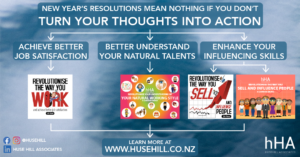Post Statistics
This post has 832 words.
This post has 4776 characters.
This post will take about 4 minute(s) to read.

Whether you’re facing Y2K, 9/11, Global Financial Crisis or the new Coronavirus, it doesn’t change the fact life goes on. Children still get born and need to be raised; they go on to start a family and need housing and transport. When a financial crisis hits, Society doesn’t slow down. It’s the Economy that slows down.
Ironically, in a time of financial crises, you can have more success than during an average economy. An example of this is if you try to acquire a new customer or client when the Economy is right, you’ll do a whole lot of work and put in a special price, but the existing supplier will match your price. All you’re doing is creating a better product or service pricing structure for that organisation.
In hard times, which we are entering, companies will not fight as much over your getting the business because they now don’t have the funds to support that.
Achieving these opportunities is dependent on your ability to sell and influence people.
That starts with what makes you tick. In other words, what are your natural talents, how do you communicate with people, and how well do you interact with people? Some of those skills will be good, and some will detract from what you’re trying to achieve.
In my book Revolutionise the way you Sell and Influence People, I’ve taken the time to set out the fundamental elements of human behaviour so that you can objectively see where you are coming from. More importantly, what are you good at that supports the sales-influencing process, and what needs work. Once you’ve understood this, then you can objectively look at the person or persons that you want to sell and influence. What is it that motivates them and how can you best work with them.
Selling hasn’t changed over the years, but what has changed is the expectation of customers. If you’re working from a traditional sales process, then you’re already on the wrong foot. If you work from the customer-centric perspective, who you want to purchase your product or service, then you are going to get a much better outcome.
The first thing to do is to identify potential clients or customers. Then you need to have a strategy of how to approach them, using research and social media to find their background. Find out who the decision-makers are. You may be dealing with several people within the organisation rather than an individual.
The next things are to set up a meeting with those decision-makers. In some industries, you may not necessarily understand the language that some of the customers use. Rather than go to the top and get the language or interaction wrong, it may be better to start down at the user-level and find out what pain-points are essential to them. From there, you can then go to the decision-maker(s). It is fruitless if you’re trying to sell down to the user-level, you’ve got to talk to the key decision-makers that are across all the facets of the business. This is usually through a CEO, VP or Operations manager.
It is interesting how Sales ability is judged on whether or not you get the sale. I believe that is the worse way to monitor how you’re interacting and developing your knowledge, skills and competencies. It’s far more effective if you can look at it through the customer’s eyes. In other words: to see what John Brown buys, you need to see through John Brown’s eyes.
Once you’ve set up a meeting, you’ve got to look at how best to interact with them. We don’t learn from getting something right; we learn from getting it wrong through making mistakes. In my book, I’ve set out a way for you to analyse how well you’re interacting with that customer. In other words, if you walk out with an order, how did you get that? Are you confident you could do it again? If you walk out without a sales order, then what part of the sales process could you have improved on to get a better outcome?
The book is written on a competency model starting with understanding how you tick, then understanding how customers tick. Then it moves on to identify the knowledge, skills and competencies you need to take a sales interaction through to a successful close while showing you why you were successful or not.
I recommend you have a look at my book which is available on the website and through Amazon, where you can review the book.
Click here for the hardcopy and ebook format of Revolutionise the Way you Sell and Influence People.
Right now we live in interesting times, and I want you to be able to enjoy the tough times because that’s an easier place to make significant sales success.



